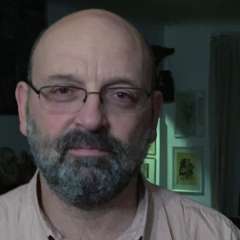Continuing to explore the early 19th-century operatic repertoire, the two-year-old ensemble Teatro Nuovo proposed – at Lincoln Center’s Rose Theater – an encounter with two unduly neglected opuses: Bellini’s La straniera and Rossini’s La gazza ladra. Those surprised by the high quality of these performances should not forget though that the Teatro Nuovo initiative, meant to revive the excitement of listening to bel canto, is deep-rooted in the decades-long experience of its founder, Will Crutchfield, as Director of Opera for the Caramoor Festival.
Thursday night’s presentation of La gazza ladra exposed an enthusiastic public to an auditive and visual happening that was entirely novel for many long-time opera lovers. The period-instrument orchestra – with its wooden flute and horns and trumpets without valves – was not hosted in a pit, but at the same level as the audience, so that everyone could see its uncommon layout. There was no conductor per se: the conducting duties were split between Jakob Lehmann, the primo violino e capo d'orchestra, who seemed to be mainly focused on the instrumentalists' performance, and Rachelle Jonck, maestro al cembalo, who paid more attention to coordinating the vocal forces. Members of the ensemble were facing different directions. Violinists were placed in a row with their back to the public. Other strings were divided on both sides of a central axis linking Lehmann and the winds. The desired result was a deeper collaboration between all the musicians involved, in fact a fortunate blend between the warmer-then-usual instrumental sounds and the voices. On a few occasions, wind instrumentalists stood during their dialogues with the vocal soloists, so that the sound would come from the same level. When a singer needed – with typical bel canto freedom – to express a specific state of mind by slowing down or accelerating his output, the orchestra was always responding appropriately. There was no maestro dictating his way around.
The performance was semi-staged, with a couple of chairs as props and many stage entrances that appeared a little hastened. Both soloists and choristers wore formal attire. With so many individual contributors, the overall quality of singing was remarkable, considering that the soloists were not necessarily household names, but still growing artists. As expected, vibrato was used sparingly. Quintets and sextets were showcases for exquisite vocal integration. Alisa Jordheim, as the main character Ninetta, might not have the most individualized voice, but her soprano had a pleasant, uniform texture across her entire range. Her interpretation of several arias – from the cavatina “Di piacer mi balza il cor” to “Deh tu reggi in tal momento” – was faultless. In the role of her lover, Giannetto, tenor Oliver Sewell took some time to warm up, eventually displaying the mellifluous quality of his instrument. Reversely, bass Hans Tashjian started strong as the mean mayor – “Il mio piano è preparato” – but his voice faded a tad towards the end. Mezzo Alison Gish (as Lucie, Giannetto's domineering mother) assuredly rendered her single aria “A questo seno”. Bass-baritone Erik van Heyningen (Fernando, Ninetta's deserter father), bass Daniel Friedley (the praetor) and baritone Rob McGiness (Fabrizio) had their own moments of shine. The most distinctive voice of all was that of mezzo-soprano Hannah Ludwig in the trouser role of Pippo. Not only was her “Tocchiamo, Beviamo” gorgeous but so were the tiniest of her interventions.
From the very first bars, listening to the sparkling overture – a constant presence in the concert life and one of the most recognizable of Rossini’s outputs – I was thinking about the fickleness of artworks’ posterity. In his Life of Rossini, the great French novelist and critic Stendhal provided a firsthand description of the enthusiastic reception that greeted La gazza Ladra at its 1817 La Scala premiere: “The success was so enormous, the opera aroused such furore that at every moment the audiences stood up en masse to cover Rossini in acclaim”. The opus continued to be at the center of public attention during the entire 19th century. Subsequently, rather abruptly, it fell into almost total desuetude. Why did The Barber of Seville, also composed in 1817, continue to thrive and La gazza did not? Is it because the first opus is an effervescent opera buffa and the latter melodramma is considered a hybrid, an opera semiseria? Because its libretto is full of hard to fathom and hard to believe meanders? Or maybe because an appealing score has its obvious longueurs? Nobody can provide a definite answer.




